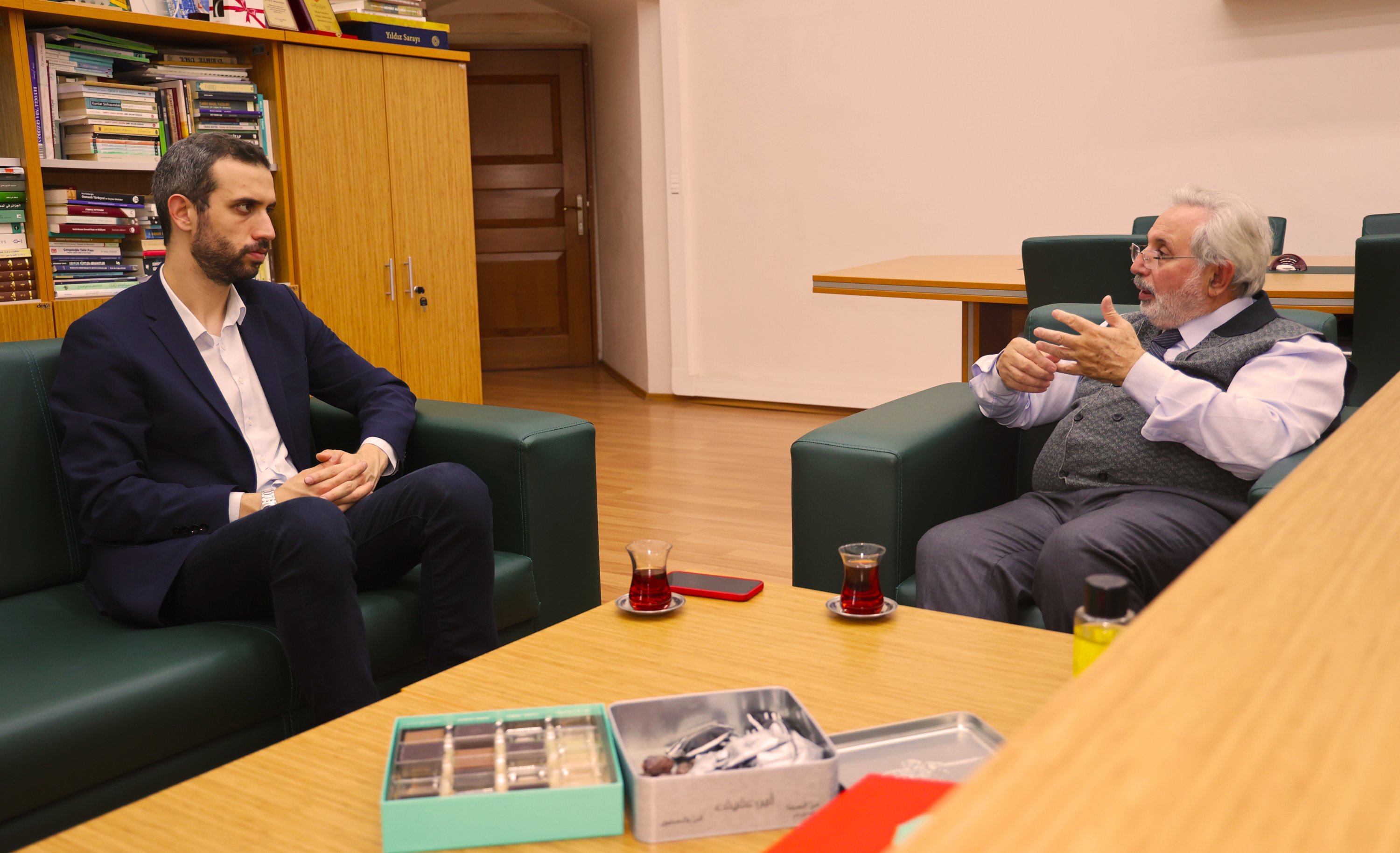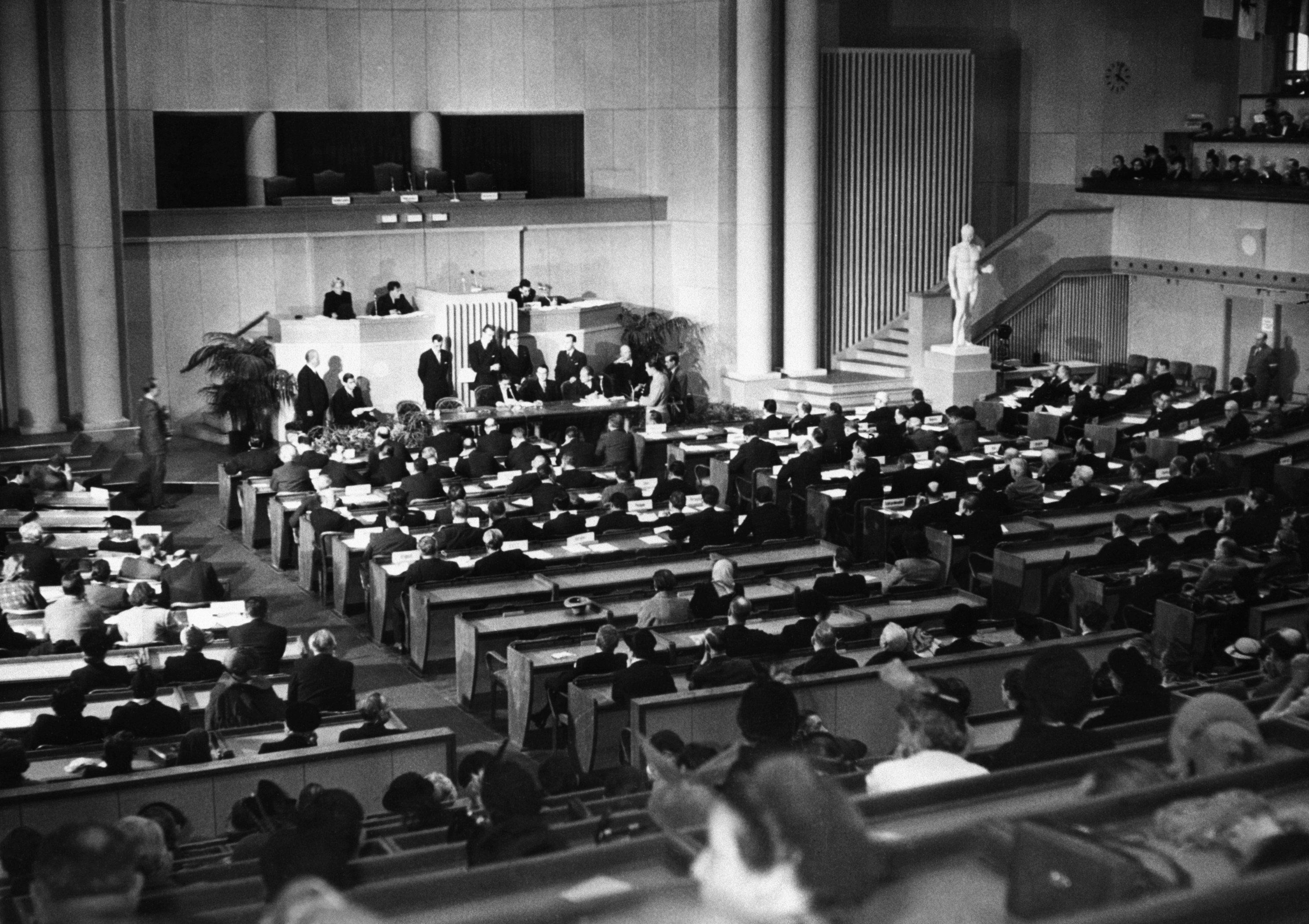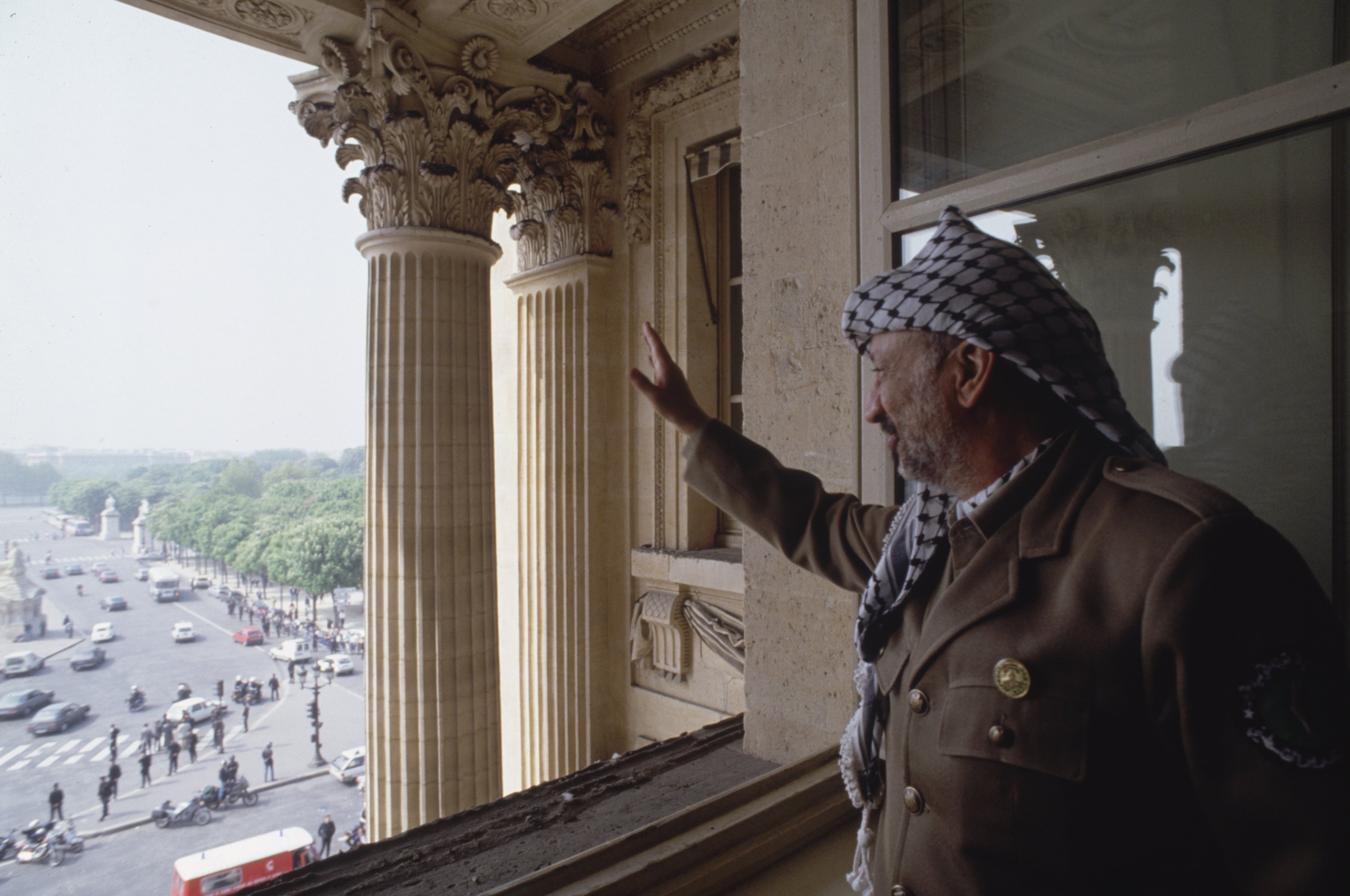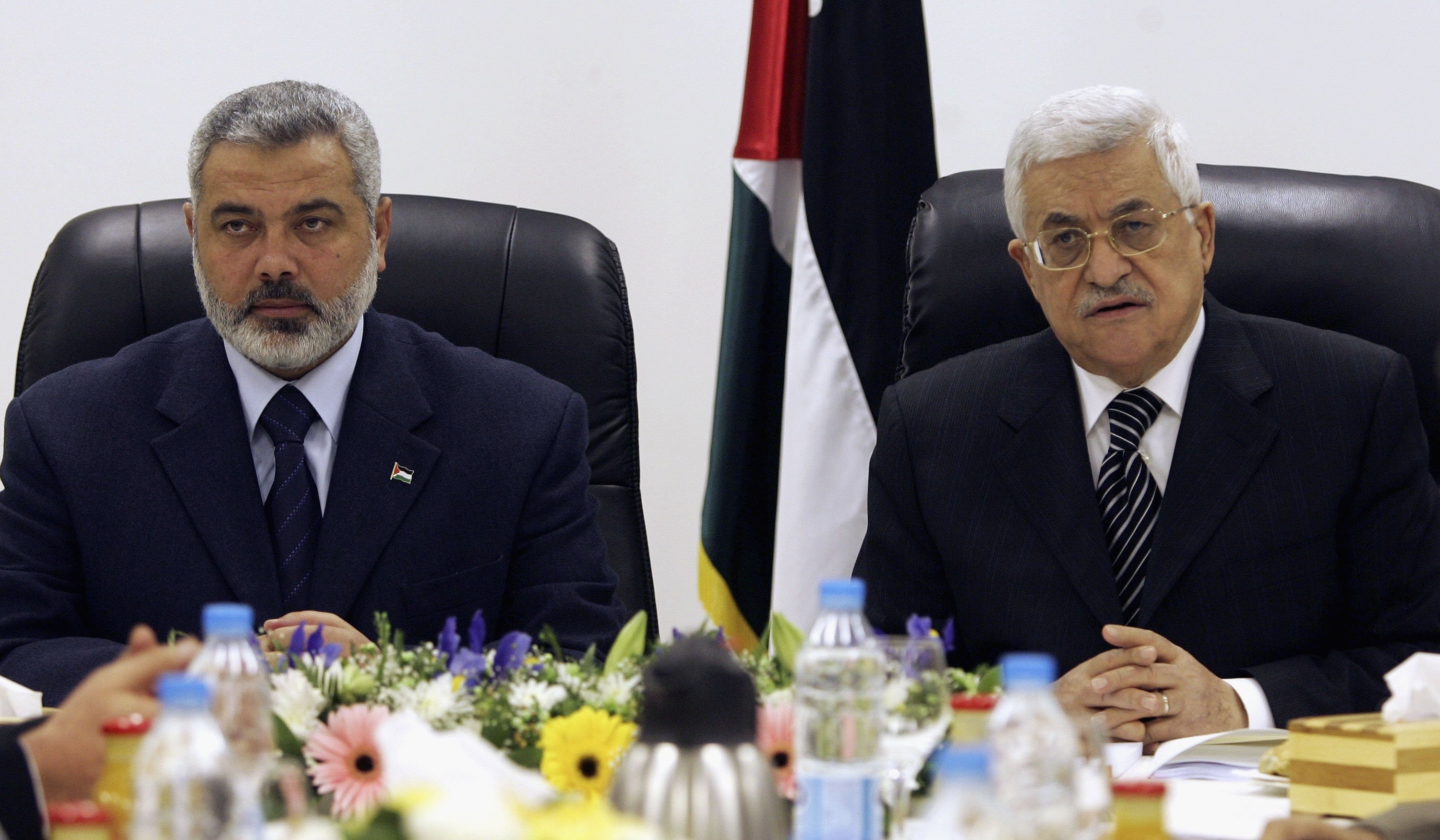© Turkuvaz Haberleşme ve Yayıncılık 2026
On the morning of Oct. 7, the world awoke to not only witness Hamas' most ambitious assault in its history but also to mark the beginning of an incident that would lead to atrocities committed against civilians.
Since then, the attention-grabbing geopolitical dispute between Israel and Palestine has sparked fervent debates across many countries. Mass rallies condemning Tel Aviv for the massacres in the Gaza Strip have united societies, with global public opinion largely aligning with the conclusion that Israel is committing war crimes in the region. For certain politicians, such as President Recep Tayyip Erdoğan of Türkiye, Israel has been labeled as a "baby killer." There are opposing views as well. At its core, a fundamental question arose – who is truly right? However, beyond this question lies a more fundamental one that echoes through the pages of history: What is Palestine, really? Some hawkish members of the Knesset have claimed that Palestinian lands belong to Israel, a direct contradiction of the views held by Palestinians.
The Israeli-Palestinian conflict is a complex and long-standing one, with its roots deeply embedded in history. The region has been a crossroads of civilizations for millennia, and its strategic location has made it a coveted prize for empires throughout the ages. The conflict intensified in the late 19th century with the rise of Zionism, an extremist movement that sought to establish a Jewish homeland in Palestine. This led to the displacement of Palestinians and the creation of the State of Israel in 1948. Since then, the conflict has been marked by violence and bloodshed. There have been numerous wars, intifadas (uprisings) and cycles of violence. The two sides have been unable to agree on a resolution, and the conflict continues to this day.

To fully understand the underlying reasons for the conflict and find a long-term resolution, experts suggest examining historical data. Professor Zekeriya Kurşun, a renowned authority on the region, is among them, and he identifies the definition of “Palestine” as the key factor driving the crisis.
"Without examining historical evidence, it is easy to be misled regarding what Palestine truly represents," emphasized Kurşun in an exclusive interview with Daily Sabah. “Without Palestine 101, you can’t even make a single comment on the issue,” he said.
Kurşun, as the dean of the Faculty of Humanities and Social Sciences at Fatih Sultan Mehmet Vakıf University in Istanbul, is an accomplished author of region-specific literature and has conducted extensive research throughout the entire Middle East during his academic tenure.

From a classical perspective, Palestine is a geographical area that comprises the southern section of Syria, offering access to the Mediterranean Sea. Encompassing roughly 27,000 square kilometers (10,425 square miles). Those lands were governed by diverse powers during numerous historical periods, and the most extended period of sovereignty, dating back to ancient times and arguably continuing to the present day, was under Ottoman rule, spanning around 400 years. Following Ottoman rule, a British mandate period emerged in this region after 1917.
“Despite not being recognized as a political entity, country or administrative unit, this region was already referred to as Palestine by that time,” stated Kurşun. He added, “The name 'Palestine' has been used as a geographical term since medieval times and it is present on old maps and other references.”
The professor noted that the Sykes-Picot Agreement and the 1919 Paris Peace Conference, as well as the San Remo agreements, recognized the existence of a Palestinian region, albeit under a mandate, following the changes that resulted from World War I in the area.
“This region underwent a significant historical change as the Ottoman administration dissolved, leading to the establishment of different authorities within the former Ottoman territories,” he said.
He referenced existing evidence from the global academic community, stating: "During the British mandate, the region was known as Palestine, not England, the Ottoman Empire or Israel. This naming convention was widely recognized until 1948."
In 1948, the British left the area and talked about the effects of past centuries and processes lost their relevance as Israel emerged as a new political entity and received speedy recognition from the U.S. and other countries.

So, what was the fate of Palestine thereafter?
According to Kurşun, “It's as if Palestine vanished abruptly, as if international society no longer acknowledges this region, despite its status as the Palestine Mandate.”
“This issue is fundamental,” he emphasized and continued: “Before it, the Balfour Declaration in 1917 promised that geography to a society who did not reside there. The preparation for that promise lasted until 1948 when this problem suddenly emerged.”
Before 1948, the Arabs expressed objections about the threats and dangers associated with this issue.
“To address these objections, options such as incentivizing individuals to migrate to the region or providing financial support to Zionist groups who came from the West were considered,” Kurşun said.
The professor links this incident with extremist groups exerting pressure and causing the displacement of individuals from their homeland.
Historical records demonstrate that in 1936, the British established a commission to segregate Jews and Arabs, allocate separate territories and delineate their respective spheres of influence.
According to Kurşun, this account suggests that even during the height of the crisis, the concept of Palestine persisted in the minds of Western powers, including England and the Mandate.
“Despite this, two distinct communities were living in the region, one long-established and the other more recent. They attempted to establish a system between the two parties, but it was unsuccessful due to objections from the Arabs,” Kurşun lamented.
In 1947, as the U.N. reevaluated the problem, the headline focused on the division of Palestine, indicating acceptance of the plan to split Palestine into 40% for the Arabs and 60% for others, including children. Despite the partition, the geography remained Palestine. The famous partition plan remained in place until Israel's declaration of state in 1948, which occurred in what was still recognized as Palestine.
“We are discussing present developments where Arabs have joined various organizations to establish their own systems, protect their lands, or actively resist external developments,” Kurşun said.
“It's noteworthy that the war that commenced in 1948 persisted until the following year when it was finally halted. During the division in 1947, Israel had occupied a larger territory.”
It is a fact that Israel took over the land it occupied, resulting in the displacement of approximately 650,000 refugees from their own territories. These refugees had to relocate to various areas, including the Gaza Strip, the West Bank, Jordan, Lebanon and other countries. A small group of them elected to remain in the territory occupied by Israel, now recognized as Arab Israelis.
“Therefore,” Kurşun said, “as soon as Israel declared its state, it systematically depopulated the internationally recognized Palestinian territories in violation of international law, warfare agreements and the Geneva Conventions.”
The Geneva Conventions are a set of international treaties that establish the humanitarian rules of war that aim to protect people who are not taking part in the hostilities (such as civilians, medical personnel and aid workers) and those who are no longer participating in the fighting, such as wounded, sick, and shipwrecked soldiers and prisoners of war. The first Geneva Convention was adopted in 1864, and there have been three additional conventions adopted since then. The most recent round of revisions, which took place in 1949, resulted in the four Geneva Conventions that are in force today.

Kurşun argues that the systemic policy against Palestinian territories back then elicited reactions and the emergence of resistance groups, yet it was insufficient. He pointed out the year 1967 when the second major operation of occupation commenced.
“The reason behind this decision was twofold: to address potential security threats emerging in the Sinai and to pursue the completion of the ongoing occupation of Palestine.”
The Six-Day War of 1967 resulted in Israel's victory, but the U.N. released a resolution calling for the country to withdraw from the territories it had occupied in Palestine and revert to the pre-1967 borders. Consequently, the Palestine issue returned to the forefront of global attention.
During this era, the most notable resistance movement arose. Previously, there were movements established by Izz ad-Din al-Qassam. Nevertheless, the most significant and structured resistance movement, which represented the Palestinians, surfaced as the Palestine Liberation Organization (PLO) under the direction of Yasser Arafat in 1964. At that moment, this movement was also labeled as a terrorist organization. Those who encountered Arafat did not meet him as a head of state, but rather as the leader of a guerrilla movement. It was not until the Palestine State was declared in exile, specifically in Tunisia, that they received limited recognition, and the global community recognized their rights to exist in the West Bank and Gaza Strip.

“During this process, an organization emerged that aimed to represent the Palestinian community in the West Bank and Gaza Strip and enable its sustainable existence,” Kurşun said.
“As a result, many nationalities and institutions viewed the PLO favorably and sought to help it obtain an official identity and be recognized as the official representative of the Palestinian resistance movement.”
“However,” the professor said, “it is important to remember that there are three, or possibly even four, distinct groups within the Palestinian community.”
“One group consists of those who have lived under Israeli occupation since 1948, while another has a special status in Jerusalem, particularly in East Jerusalem. Others have been under Egyptian control for an extended period.”
He said, “Additionally, the majority of these groups are not the original inhabitants but rather those who were expelled by Israel from the territories it occupied. In Gaza, the emergence of various resistance organizations within a fragmented regional structure has been observed.”
Kurşun believes that the international community should thoroughly evaluate Hamas, as his quotes indicate that attention is solely on the group's October attack and not its underlying reasons.
"It is important to acknowledge that the Palestinian people did not adopt the Hamas resistance ideology after October 2023 nor did it originate then,” he emphasized.
"We must recognize the pre-existing movement that predates Hamas. In this regard, specific individuals, such as refugees and citizens, chose to form a group despite their difficult circumstances.”
“Now, since this group is not recognized as a sovereign territory, its characteristics are deemed illegitimate in the international arena, particularly by Israel,” he said and added, “Therefore, if your land is under occupation and you want to govern your people, you suggest holding an election.”
“However, the voters' will is disregarded, and if you live under constant, daily threats, how ought we to regard your resistance and how should we express it? We need to thoroughly understand this topic.”
The professor furthered: “While Hamas's stance, behavior and tactics may be associated by some with terrorism and guerrilla warfare, Hamas is ultimately a resistance movement. It represents the people who have been living in their territory for a long time and their ancestors before them.”
“Therefore, the international community tends to regard Hamas as a state-grown terrorist group, which is an inaccurate depiction.”
According to Kurşun, Hamas may ideologically propose ideas and criticisms for a potential two-state solution in Palestine or related issues in the future but “the matter at hand is that Fatah, specifically the West Bank, is currently recognized internationally and is represented by their leader, Mahmoud Abbas.”
“The ideological distinctions between Hamas and Fatah will be entirely shaped by their individual interests,” he said. “If a Palestinian state is established without Mahmoud, whether in accordance with the ideology of Hamas or Fatah, the Palestinian people will decide once more.”

The expert went on to say: “Ultimately, any illegitimate action, whether a military, guerrilla or death-driven operation, committed by either Hamas or Israel, cannot be justified. However, given the current disproportionality, one must question the legitimacy of applying disproportionate violence to eliminate Hamas, even though it is internationally perceived as a terrorist organization.”
“Where is the legitimacy in this situation? Let's assume there is a group of criminals involved,” he highlighted and ended his words by saying, “In that case, there should be a trial procedure in place.”
Kurşun further commented on what he labeled as the Israeli violation of international law and again referred to the Geneva Convention.
“From a humanitarian standpoint, what Israel does is reprehensible,” he said and added, “It goes beyond war crime standards and can be classified as terrorism.”

“Israelis and Jews reside on one side of the Gaza Strip, while 2.3 million Palestinians are squeezed onto the other side,” he said and asked the following questions: “Are the lives of those living on the Israeli side more precious? Are the people on one side more valuable than the other? Is the survival and existence of one side more important than the others? Can we make such a significant distinction?”
He furthered, “We must acknowledge every individual on both sides, regardless of whether they are Jewish, Muslim, Palestinian or Gazan, as fellow human beings.”
“The situation is dire, with discrimination present,” he emphasized.
